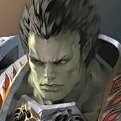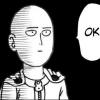[Greek & English]History of Nitendo 64
-
Posts
-
https://jumpshare.com/share/kIdeKALOhgtMKpBKqxpg Test Equip Armors-> FullPlate, Gloves, Legs, Chest , Boots
-
黑色星期五 — 为您的流量提供高级福利 仅在11月28日,我们的特别促销码可为您提供13%的商店折扣。 促销码: BLACKFRIDAY (13% 折扣) 您可以通过我们的网站或 Telegram 机器人在商店购物! 有效链接: 数字商品商店(网站): 前往 商店 Telegram 机器人: 前往 – 通过 Telegram Messenger 方便访问商店。 其他服务: 虚拟号码服务: 前往 用于购买 Telegram Stars 的机器人: 前往 – 快速且优惠地在 Telegram 中购买 Stars。 SMM 面板: 前往 – 推广您的社交媒体账户。 我们向您呈现当前的 促销和特惠活动 列表,用于购买我们服务的产品和服务: 1. 您可以在首次购买时使用促销码:SOCNET(15% 折扣) 2. 获取 $1 商店余额或 10–20% 折扣 — 只需在我们网站注册后发送您的用户名,格式如下:“SEND ME BONUS, MY USERNAME IS...” — 您需要在我们的论坛帖子中写下这句话! 3. SMM 面板首次试用可获得 $1:只需在我们的网站(支持)提交主题为“Get Trial Bonus”的工单。 4. 我们的 Telegram 频道和 Stars 购买机器人每周都会举办 Telegram Stars 抽奖活动! 新闻: ➡ Telegram 频道: https://t.me/accsforyou_shop ➡ WhatsApp 频道: https://chat.whatsapp.com/K8rBy500nA73z27PxgaJUw?mode=ems_copy_t ➡ Discord 服务器: https://discord.gg/y9AStFFsrh 联系方式与支持: ➡ Telegram: https://t.me/socnet_support ➡ WhatsApp: https://wa.me/79051904467 ➡ Discord: socnet_support ➡ ✉ 邮箱: solomonbog@socnet.store
-
BLACK FRIDAY — PREMIUM BENEFITS FOR YOUR TRAFFIC Only on November 28 our special promo code gives you a 13% discount in the store. PROMO CODE: BLACKFRIDAY (13% Discount) Shop in our store on the website or via the Telegram bot! Active links: Digital goods store (Website): Go Store Telegram bot: Go – convenient access to the store via Telegram messenger. Other services: Virtual numbers service: Go Telegram bot for purchasing Telegram Stars: Go – fast and profitable purchase of stars in Telegram. SMM Panel: Go – promotion of your social media accounts. We want to present you the current list of promotions and special offers for purchasing our service's products and services: 1. You can use a promo code for your first purchase: SOCNET (15% discount) 2. Get $1 to your store balance or a 10–20% discount — just send your username after registering on our website using the following template: "SEND ME BONUS, MY USERNAME IS..." — you need to write this in our forum thread! 3. Get $1 for the first trial start of the SMM Panel: just open a ticket with the subject "Get Trial Bonus" on our website (Support). 4. Weekly Telegram Stars giveaways in our Telegram channel and in our bot for purchasing stars! News: ➡ Telegram channel: https://t.me/accsforyou_shop ➡ WhatsApp channel: https://chat.whatsapp.com/K8rBy500nA73z27PxgaJUw?mode=ems_copy_t ➡ Discord server: https://discord.gg/y9AStFFsrh Contacts and Support: ➡ Telegram: https://t.me/socnet_support ➡ WhatsApp: https://wa.me/79051904467 ➡ Discord: socnet_support ➡ ✉ Email: solomonbog@socnet.store
-
Usually, I work alone on my projects, but sometimes the work is much more than I've expected. Could you provide a price list? It would be good if we knew your price before contacting you.
-
BLACK FRIDAY — PREMIUM BENEFITS FOR YOUR TRAFFIC Only on November 28 our special promo code gives you a 13% discount in the store. PROMO CODE: BLACKFRIDAY (13% Discount) Shop in our store on the website or via the Telegram bot! Active links: Digital goods store (Website): Go Store Telegram bot: Go – convenient access to the store via Telegram messenger. Other services: Virtual numbers service: Go Telegram bot for purchasing Telegram Stars: Go – fast and profitable purchase of stars in Telegram. SMM Panel: Go – promotion of your social media accounts. We want to present you the current list of promotions and special offers for purchasing our service's products and services: 1. You can use a promo code for your first purchase: SOCNET (15% discount) 2. Get $1 to your store balance or a 10–20% discount — just send your username after registering on our website using the following template: "SEND ME BONUS, MY USERNAME IS..." — you need to write this in our forum thread! 3. Get $1 for the first trial start of the SMM Panel: just open a ticket with the subject "Get Trial Bonus" on our website (Support). 4. Weekly Telegram Stars giveaways in our Telegram channel and in our bot for purchasing stars! News: ➡ Telegram channel: https://t.me/accsforyou_shop ➡ WhatsApp channel: https://chat.whatsapp.com/K8rBy500nA73z27PxgaJUw?mode=ems_copy_t ➡ Discord server: https://discord.gg/y9AStFFsrh Contacts and Support: ➡ Telegram: https://t.me/socnet_support ➡ WhatsApp: https://wa.me/79051904467 ➡ Discord: socnet_support ➡ ✉ Email: solomonbog@socnet.store
-
-
Topics











Recommended Posts
Create an account or sign in to comment
You need to be a member in order to leave a comment
Create an account
Sign up for a new account in our community. It's easy!
Register a new accountSign in
Already have an account? Sign in here.
Sign In Now